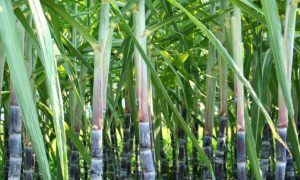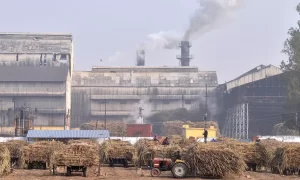Kenya : Lawmakers finally strike deal on contested sugar reforms

Kenya’s lawmakers have passed the Sugar Bill, 2022, reforming the troubled sugar industry. It removes sugarcane from Agriculture and Food Authority oversight and establishes the Kenya Sugar Board for regulation. Key provisions include stricter import controls, factory development, and research funding. The law aims to boost productivity, support farmers, and revive the sector, awaiting President Ruto’s approval.
Lawmakers have finally ended a months-long impasse over a law aimed at ensuring better regulations of the sugar sector, paving way for reforms in the ailing industry.
The development will see sugarcane removed from being a scheduled crop under the Agriculture and Food Authority (AFA) and Kenya Sugar Board (KSB) established to regulate the sector.
The move comes after MPs and senators agreed on contentious amendments to the Sugar Bill, 2022, allowing for its passage and transmission to President William Ruto for signing into law.
The Bill is seen as a key component in bringing much-needed reforms to Kenya’s sugar sector, which has been plagued by mismanagement, inconsistent pricing, and competition from cheap imports.
The sugar industry plays a vital role in the Kenyan economy, particularly in the western regions of the country where sugarcane farming is a primary livelihood.
The sugar sub-sector is vital to Kenya’s economy with over 400,000 small scale farmers as its backbone.
“We have reached an agreement and we have the final draft. This means that anytime from now, the President will sign the Bill into law,” said Senate Agriculture committee chairperson James Murango.
“Once signed into law, we will have a KSB tasked with regulating, developing and promoting the sugar industry,” the Kirinyaga senator added.
Mr Murango explained that one of the major sticking points in the Bill has been the question of how to regulate the industry and ensure fair pricing for sugarcane farmers.
He said the responsibilities currently fall under the Sugar Directorate under AFA, which has been blamed for not doing much over the decline of sugarcane farming in Western Kenya, leading to a surge in sugar imports.
“Removing sugarcane from being a scheduled crop in AFA just like tea means sugar will be given special attention and the Board will also be consulted before rushing to do any imports to safeguard farmers,” he said.
Mr Murango said the Bill aims to address the issues by boosting productivity, streamlining processing, enhancing value addition and creating a favourable regulatory framework.
Once signed into law, it is expected that the legislation will lead to the revival of the sugar industry to meet domestic needs, and generate surplus for export, benefitting millions of Kenyans and improving livelihoods.
A joint mediation committee was formed last month to resolve the long-standing impasse over the Bill with the team tasked with addressing contentious issues that have delayed the enactment of the piece of legislation.
The two legislative Houses had differences over specific provisions in the Sugar Bill, including the roles of different regulatory bodies, pricing mechanisms, and the need for better regulation and protection from exploitation by millers and traders.
Another contentious issue is the regulation of sugar imports, which have often flooded the local market and driven down prices for domestically produced sugar.
Farmers and millers have consistently called for stricter controls on imports to protect the local industry from unfair competition.
However, some stakeholders believe that completely restricting imports could lead to price increases for consumers and reduce access to affordable sugar.
The committee’s mandate was to find a middle ground on the contentious issues and to present a unified proposal that can be passed into law.
The senator said the Bill proposes the collection of sugar development levy from domestic sugar which 30 percent shall go towards factory development and rehabilitation, and research and training allocated to the Kenya Sugar Research and Training Institute.
Forty percent of the money will be applied for cane development and productivity enhancement while another 15 percent shall be allocated to sugarcane producing regions on a pro-rata basis based on production capacity for infrastructural development and maintenance and shall be managed by the Sugar Board of Kenya.
“We will have conditional grants going directly to the sugar belts to take care of the roads on a pro-rata basis like if Kisumu is producing more sugar, then it will get more of the money,” he said.
Mr Murango added that they adopted the catchment area as was proposed in the former Kakamega Governor Wycliffe Oparanya’s sugar taskforce report.
The catchment areas will see central area comprise Kisumu, Southern Nandi, and Kericho Counties; Upper Western made up of Bungoma, Kakamega, excluding Mumias area, Trans- Nzoia, Uasin Gishu, and Northern Nandi Counties.
Lower Western area will consist of Mumias, Busia and Siaya Counties; Southern areas include Migori, Homa Bay, Kisii, and Narok Counties while Coastal area comprises Kwale, Tana River, and Lamu Counties.
“We have agreed that the sugar catchment area should be uniform for election and for cane management to stop cane poaching. The catchment area will be the same as the geographical area to be used during elections to ensure you elect someone who will represent you in the Board,” said Mr Murango.
To better regulate the sector, he said a miller shall not purchase sugar crop from, or accept, sugar crop delivered by a grower and a grower shall not sell or deliver sugar crop to a miller, unless the grower is registered with, and has in force a valid supply agreement with the miller or the factory of the miller is situated within the grower’s sugarcane catchment area.
In terms of inter-miller agreements, a miller may enter into a contract of cane supply with another miller if the factory of the miller is temporarily broken down; there is an oversupply of cane to the miller or the mill is located within the same sugarcane catchment area.
On the other hand, a grower may deliver cane outside a sugarcane catchment area provided that, the grower has no supply agreement with a miller within the sugarcane catchment area that they are situated in or is not indebted to a miller or an outgrower institution within the sugarcane catchment area.
This is in addition to a grower having a pre-existing agreement with a miller situated outside the sugarcane catchment area.
A Kenya Sugar Research and Training Institute, as proposed in the Bill, will be tasked with promoting, coordinating and regulating research in sugar, sugar crop, sugar by-products, sugar technologies and management practices.
The institute will also be expected to expedite equitable access to research information, resources, sugar technologies and innovations and promote the application of research findings in the development of the sugar industry.
Source Link : https://www.businessdailyafrica.com/bd/economy/mps-finally-pass-bill-aimed-at-reviving-ailing-sugar-industry-4799484
















